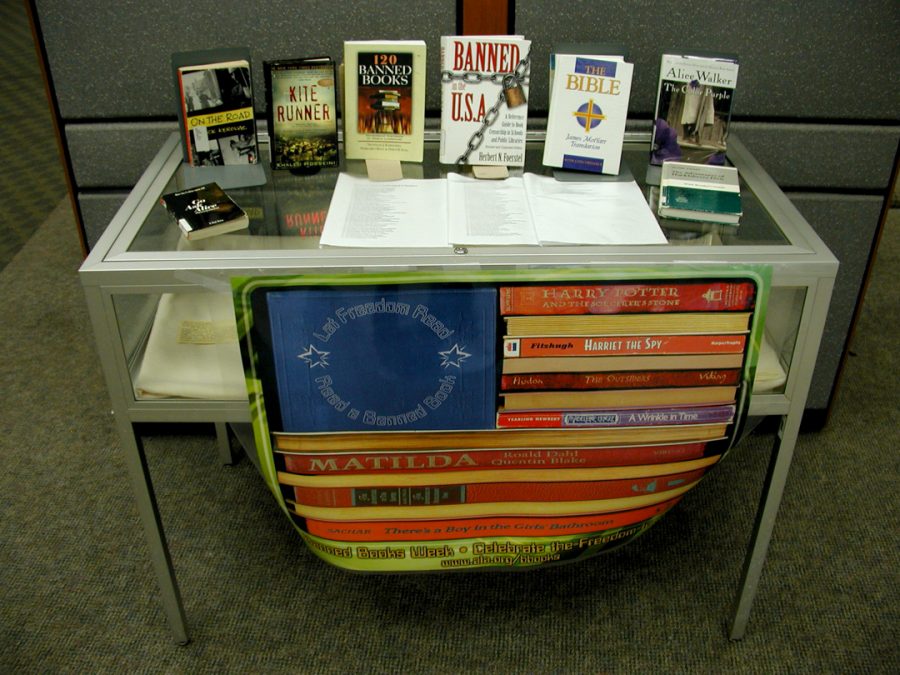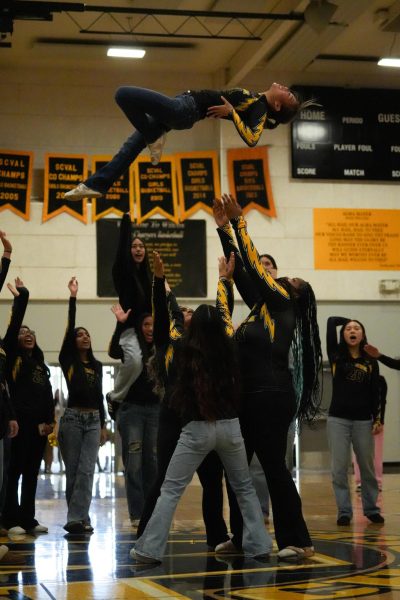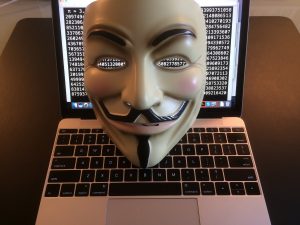Censorship, Covering Your Eyes since 1896
Previously banned books are often displayed at libraries, showcasing a historically common form of censorship.
If there is one thing that is universally known, it is that people do not like being told what to do. If a kid is told not to watch or read something, it will be their life’s mission to obtain whatever that is. Censorship in this scenario is the parent trying to stop the kid, and the world is now the kid trying to watch what they have been told not to.
Censorship can be found everywhere, but the one type that has been the most prevalent in school has always been the act of banning books. Parents wanting to control what their children read is completely understandable. However, parents make decisions like these based on their own values and principles, and those principles are not always shared by everyone. If a parent does not want their kid reading something, they should stop the child themselves instead of stopping everyone else from consuming it. Kids are all different, and something that one person might find shocking may be completely normal to someone else. Banning books because the content might be shocking or disturbing seems counterintuitive. How will a child try to find new things or learn new perspectives if they keep seeing the same type of thing?
Sometimes the level of overprotectiveness becomes unreasonable. According to Barnes & Noble, many books are banned for obscene reasons. Where the Sidewalk Ends by Shel Silverstein was banned for “promoting cannibalism,” Little Red Riding Hood, a childhood classic, was banned because the book depicted the girl having a little bottle of wine in her basket, and Are You there God? It’s me, Margaret by Judy Blume was banned for being sexually offensive, which according to CBC came from parents not wanting to get awkward questions about puberty.
TV shows have different types of censorship. There are two types of censorship for the most part, things like blurs or beeps in shows to hide “inappropriate” things and not airing episodes. The latter is worse, in my opinion, because many times the withdrawal of the episode came from more outdated views that were held at the time of (not) airing. In the 1950’s, sitcoms were banned from showing couples lying in the same bed or even kissing due to the more conservative values of the time.
The type of censorship that just covers up the more extreme parts, such as mosaics or bleeps, are seen more often. Obviously, it is important for television networks to not get sued because even showing the logo of a company on camera can result in a lawsuit. This form of censorship is also understandable for shows like local news channels where having a wide variety of people watching is important, it really is not great anywhere else. Most of the time this type of censorship is on reality tv shows that have them so they can have a lower show rating. Having an annoying sound replacing a swear is not going to hide the fact that the word exists to anyone. If a mosaic is shown, there is no secret about what it is hiding. If the people really cared about kids not being exposed to this kind of thing they would not show it all.
Censorship does not just come from the need of wanting to keep children innocent, sometimes it can also come from uncomfortable topics regarding history. Especially when the piece of fiction is foreign. For example, the Death of Stalin, A historical comedy depicting what happened after the death of Stalin in Russia that came out in 2017. According to the New York Times, in Russia, the dark comedy was seen as obscene and “making a mockery of historic figures”. The movie itself is very funny and while of course it paints characters in certain ways to be more humorous, it is generally historically accurate. According to the Hollywood Reporter, a movie theater in Moscow that showed the movie anyway was raided by the Russian police for defying the order of the cultural ministry.
Film has been censored for a very long time. Since the dawn of cinema, people have been wondering how ideas and morals brought up in film would corrupt the minds of the people. According to the NCAC (National Coalition Against Censorship), the first censorship law in the US was introduced in 1907, and after that many censorship boards were started around the country. Obviously things are not as strict as they are now, but just because it has slowed down does not mean it has stopped.
Sometimes censorship is necessary, but most of the time it comes from overprotectiveness and a fear of the new ideas and thoughts being introduced. Censorship is such a vague concept that the idea of all of it being bad is not universally accepted even today. However, hopefully the time where others try to tell the public what they can or cannot watch will end soon enough.






